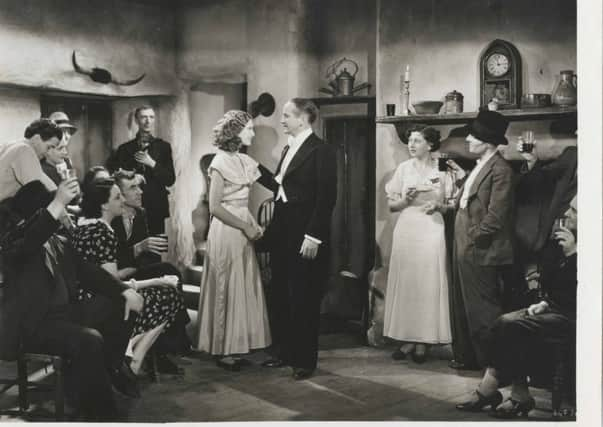Richard Hayward’s star quality dazzled audiences


In addition to his travel writing, which opened up Ireland to the wider world, Hayward is also remembered for his acting, film-making and singing careers, which lasted from 1920 until 1958 and which also showcased Ireland to a wider audience.
Lancashire-born Hayward, who moved to Larne at the age of three with his family, used his creative talent to bring the Irish character, culture and landscape to life on vinyl and the big screen.
Advertisement
Hide AdAdvertisement
Hide AdHayward’s biographer Paul Clements, who recently launched his new book ‘Romancing Ireland: Richard Hayward, 1892-1964,’ told the Times: “Hayward completed four major films- The Luck of the Irish, Early Bird, Irish and Proud of it and Devil’s Reach.


His song entitled ‘The Humour’s on Me’ was also used in The Quiet Man and he made an appearance in the Titanic film A Night to Remember. He also discovered Dinah Sheridan and launched her career when he put her in Irish and Proud of It at the age of just 15. She went on to appear in The Railway Children and Genevieve.’
Hayward created 19 films and starred in 28 stage productions. His first film, The Luck of the Irish, was filmed in Glynn. James Patton, who was a child at the time, described the scene: “There were lorries everywhere, with giant lights, and camera crews were everywhere, it was just pandemonium, but, standing in the midst of all this flutter was a very ordinary looking man who was pointed out as the star.
“The country folk of course were used to stars like Wallace Beery and James Cagney and such, so there were mutterings: ‘He doesn’t luk lak a star’’ But things were different when the star sang ‘There was an ’oul man from Killyburn Brae’ and ‘The Bright Silvery Light of the Moon.’”
Advertisement
Hide AdAdvertisement
Hide AdStaying faithful to the East Antrim coast, Hayward’s next film ‘The Early Bird,’ filmed in Glenarm and Carnlough, broke box office records in parts of Ireland and attracted critical acclaim.
Hayward also worked for the BBC, and appeared on the opening night of UTV in 1959 with Sir Laurence Olivier, when he performed a song.
Paul is ‘in awe’ of Hayward’s versatility as a singer and actor: “Hayward released 156 songs with Decca, more with HMV. He collected them and arranged the songs himself. He sang with Delia Murphy, who was a famous celebrity at the time. He discovered her singing in Dublin.”
Hayward also made an important contribution to unionist culture, recording popular songs such as “The Ould Orange Flute”, “My Lagan Love”. In 1933, he became the first artist to record “The Sash My Father Wore” on his record ‘The Protestant Boys.’
Advertisement
Hide AdAdvertisement
Hide AdReflecting on Hayward’s legacy, Paul concluded: “I am in awe of what he achieved in those times with the Depression, partition the war years and the frugal Fifties. “
The legacy he left behind is astonishing. He was his own man and he did his own thing and I admire that he had the courage to get involved in all manner of cultural enterprises.”
Paul Clement’s book is available from The Book Nook in Larne.